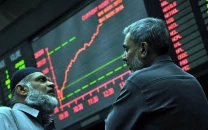Learning from thy neighbour
Pakistan's economic situation is a mirror of India's 20 years back.

In 1991, India stood on the threshold of bankruptcy. Large fiscal deficits had been sustained throughout the late 80s to finance government expenditures and agricultural subsidies. The Indian government’s borrowing from the Reserve Bank of India (India’s central bank) had exerted considerable inflationary pressures on the economy and price levels soared. Simultaneously, public debt had increased and the country had to make huge payments to the International Monetary Fund (IMF) and foreign creditors.
The tipping point for the economy came with the Gulf war. Oil prices spiked and inflated the import bill beyond the country’s financial capacity and remittances fell as expatriates returned to India from the Gulf. A slowdown in India’s export markets severely restricted inflows to its current account.
The balance of payments crisis culminated in June 1991 when Indian reserves could cover only two weeks of imports and the government was close to defaulting on its sovereign debt.
India had to pledge 67 tons of gold to raise $600 million. Furthermore, India entered into a stand-by arrangement with the IMF to provide $2.2 billion over a period of 20 months.
Sound familiar? The events strike a certain chord with Pakistan’s economic meltdown of 2008.
In the coming years, the Indian government instituted a set of reforms that rendered the economy with a resilience to shoulder the Asian crisis of 1999 and the financial meltdown of 2008.
It is important to note that the oversimplification of two decades of economic history does not hide the critical lessons that may be learnt from our neighbour. Fiscal deficits may be maintained but superficial monuments and tax evasion should be razed, inflation may be high but the economy can be stable and further crises will knock the economy off course but ignoring their inevitability is foolish.
Risk worth taking
Flexibility in exchange rate policies
The Indian government instituted a major devaluation of the Indian rupee shortly after the crisis from Rs17 to the dollar to around Rs45 in the span of slightly more than a year. The key lesson here is the gradual release of the pegged rate to a more market-based rate. Pakistan had a de facto managed exchange rate up to the crisis of 2008 when the rigidity in the exchange rate eroded the current account and reserves. The subsequent free float of the exchange rate caused a massive depreciation in the nominal exchange rate while the real exchange rate remained exactly the same as 10 years ago. India managed to gradually phase out of a pegged exchange rate without subjecting its economy to the volatility of a free market rate.
Preparation
Doing the homework
India was the recipient of the then largest loan to a developing country in 1981 and managed to secure the 1991 loan on its own terms. “Homegrown conditionality” remained the fulcrum of such loans. This meant that the country actually prepared a set of conditions for a loan in case of emergency negotiations with the IMF. A plan of action for any future crisis, complete with a set of conditions that can be suitably passed through the legislative procedures, must be developed. If possible, such loans may even be incorporated into long-term economic plans. India ended up refusing the third tranche of the IMF agreement in accordance with their intended course of action. Preemption of and preparation for crises remains the key for negotiating with the IMF.
Blunders
Avoiding binary decisions
India has successfully managed to phase its economy towards a freer and more open one without mirroring the fortunes of its Southeast Asian counterparts. Indian policy decisions allowed the economy to move very gradually towards freer trade and internal deregulation whilst building up immunity to negative external shocks. The country controlled capital outflows more stringently than inflows, exchange rates have been liberalised slowly over a decade and building reserves has remained a priority in any circumstance. Fortunately, our recent policy decisions such as the gradual reduction in subsidies on oil and electricity and the management of exchange rate volatility as opposed to exchange rate levels have indicated a shift away from binary decisions such as the infamous floor on the KSE and the complete plugging of capital outflows by the Nawaz Sharif government in 1998.
Focal point
Credibility is critical
If our financial reforms suffer from a core malaise, it has to be a complete lack of credibility. It is noteworthy that although India’s fiscal deficit did decrease for a couple of years after 1991, it managed to shoot up again and remains high. Inflation has also remained in double digits for most of the past two decades. However, as long as the citizens and the international community believe that a country will not default on its debts, the country can raise money by issuing bonds. Although an excess of debt is unhealthy, monetising a deficit through the central bank erodes credibility faster than it erodes purchasing power. Finally, dare I mention how much better credibility could ease the process of our approaching donors or financial institutions for money when calamity, natural or economic, strikes?
Published in The Express Tribune, September 27th, 2010.



















COMMENTS
Comments are moderated and generally will be posted if they are on-topic and not abusive.
For more information, please see our Comments FAQ